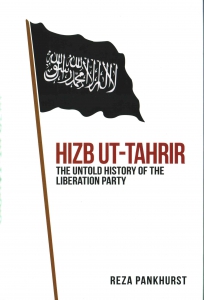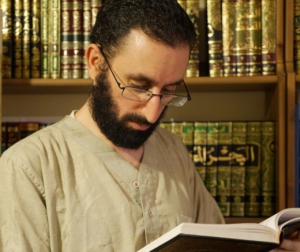Hizb ut-Tahrir stands out from the myriad of pan-Islamic political organisations for its fundamentally consistent methodology, its neutral stance on the issue of sectarian conflicts in Islam and its explicit refusal to the use of violence. As a global Islamic movement, Tahrir seeks an intellectual revival across the Islamic world in its aim of establishing a unitary Islamic Caliphate. Reza Pankhurst's book, Hizb Ut-Tahrir: The Untold History of the Liberation Party provides an erudite account of the history of the liberation party which over the years has remained rather abstruse to comprehend. Based on personal interviews conducted across several countries, ardent studying of party documents and materials Pankhurst seeks to fill the void in understanding the implications of Tahrir's intellectual culture and its adopted methodologies in Tahrir's aim of establishing the Islamic Caliphate. Pankhurst book delivers a perception-shifting yet coherent narrative on an incredibly resilient political movement that continues to thrive withstanding tremendous state repressions across the globe.


Pankhurst's book sheds new light on Nabhani's ideological standpoint. Reaching the power is not the goal, Al-Nabhani and his party always argued. Tahrir's role is rather intellectual and political to bring a radical change in the system which Al-Nabhani initially believed was possible within his lifetime. People are to be prepared before they adjust with the strict Islamic rulings and the party followed the 'method of the prophet' to bring the call of 'living by the Islamic code of life' to others. Al-Nabhani's centralised leadership meant there was an asymmetry in intellectual progress between the party leadership and the members. There was an overt dependency on the party literature, pamphlets, and books produced solely by Al-Nabhani, as he failed to emulate his leadership skills among a new generation of party members. Many members faced disciplinary actions while some key leadership figures were expelled. Although Nabhani refuted the fundamental tenets of Shia Islam, Tahrir's non-sectarian approach initially attracted many members of the Shia community. Many of them later defected to Hizb al-Dawa, a Shia version of Tahrir. It further struggled to stand against the tide of Arab nationalism and pro-Nasser emotions as 97 percent of its members left the party within five years of its official establishment.
Despite its presence in the Arab political spectrum being severely dwindled, the party launched its initiative of establishing the Caliphate early in the sixty's decade. It expanded its political presence in Syria, Jordan, Iraq and the non-Arab country of Turkey. Tahrir struggled to convert its ideological theories to practical politics. Failing to mobilise the masses behind the party banners, the Tahrir think tank concluded that 'artificial barriers' imposed by the imperialist forces were hindering the connection between the party leadership and mass people. It adopted a new strategy of seeking the support of the 'cesarean section' of the military to remove these obstacles. In 1966, the Iraqi branch of the party wasted an opportunity to work with Iraqi usurper Arif before he died in a helicopter crash which left Nabhani blaming himself for the failure. Another attempt to overthrow the Jordanian monarch failed with a sudden change of heart from a usurper. The retribution was brutal as nine of the usurpers were sentenced to death and others sentenced to prison time with hard labour. A general amnesty declared by the monarch spared the convicts their lives and avoid jail time. Nabhani expelled many of the convicted party members accusing them of not taking a robust stance during the police interrogations.
Al-Nabhani's death in 1977 brought an end to his centralised style of leadership. The new leader Abdul Qadeem Zallum was more open to participatory decision makings, a policy that was retained by his successors. In an attempt for fill the void left by Nabhani's death and to pursue the support of the regimes, the party sent delegation members to leaders such as Gaddafi and Khomeini. The discussions with Gaddafi fell through with Gaddafi defining the Umma as the Arab people while Tahrir leaders were refusing to confine the Umma to a particular ethnicity. Gaddafi regime decimated Tahrir's Libyan branch after strings of assassinations and public executions. Tahrir's next stop was Iran. With Tahrir's non-sectarian approach and the Iranian revolution at its high tide, Tahrir secured a meeting with Khomeini. An apathetic response from Khomeini and Shia clerics' sticking to their own sectarian jurisprudence brought the discussions to a stalemate. Tahrir lost many of its Shia members to its Shia counterparts, while the party analysis wrongfully identified the United States as the mastermind behind the 1979 Islamic revolution. It retained its neutral position during the Iraq-Iran war and condemned King Hussein's proposal to form an Arab army to rally behind the Iraqis. Tahrir's effort to win support among the Tunisian military went in vain after one leaked letter resulted in mass arrests and jail sentences. In the early 1980s, the party made strenuous efforts to win the support of Iraqi tribal leaders. A period of initial success was followed by executions of at least six party members including some army officers involved in the plot. As the author points out, the apparent bleak prospects in the Middle East, forced the party to shift its focus to a global stage, as the political refugees and young students representing the party started carrying out its message beyond the boundaries of the Middle East.
Tahrir gained a real stronghold in the United Kingdom, though as a non-Muslim nation it was not suitable to commence a political struggle. It also successfully overcame another party rift. Omar Bakri Muhammad, a member of its London branch, was expelled because of his ideas of establishing the Caliphate in the UK. Tahrir strongly condemned the United State's role in the Middle-East, with Zallum's book describing the US as the "Biggest terrorist nation on the earth." Zallum also addressed contemporary scientific issues such as cloning, human organ transplants and economic issues such as Capitalism which he accused of concerning solely on material issues.
Reza Pankhurst precisely identified the similarities between the Tahrir narrative and Samuel Huntington's "Clash of the Civilizations" narrative. The party believed the 'War on Terror' rhetoric was a declaration of war against the Muslim Umma as a whole. Western scholars offered a broad range of discourses on the party. Some identified the party as part of a conveyor belt that promotes violence to reach its end goals; others accused it of plain "Intellectual Terrorism." Nonetheless, as Pankhurst book unravels, an ideal democratic society would face a serious dilemma to ban a party like Tahrir that remains non-violent in its approach to uproot the democratic society itself. Pankhurst argues that the party lost its track during the 70s and the 80s when the party members lost interests in mobilising the masses and solely relied on seeking the material support or nusra. But the political events of Arab uprising proved to be a new potential to restore their efforts in winning mass support.
It's not the tyrannical states; rather it's the age of globalisation that poses a greater challenge towards Tahrir's utopian ideals. In a world where multiculturalism is more prevalent than ever before, and diversity is cherished, Tahrir will find it increasingly difficult to address concurrent issues such as human rights, feminism, LGBTQ rights and the death penalty. The establishment of a feudal relic envisaged by Tahrir depends much on its capability of extrapolating its understandings of a seventh-century theology and jurisprudence. From Caliphate to communist utopias, history is replete with failures of historical determinism. Pankhurst's book is rather implicit in placing the party in the broad spectrum of Utopian enthusiasts; from the extreme left to the extreme right. Apart from Tahrir, some far-left and far-right political parties also showed the trait of tremendous resilience while maintaining a nonetheless consistent methodology. Will Tahrir face the same fate? An analogy or comparison would have certainly benefited the readers to comprehend what makes Tahrir worthy of attention. Nonetheless, Pankhurst's book remains an essential read to understand a so far fringe political movement with the potential of becoming a formidable force. Pankhurst's book, from a fresh new perspective, unfolds a history untold for decades and will be considered as a significant contribution to understanding Political Islam.